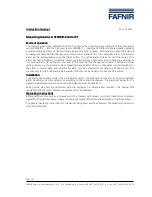
54
Using the Memory
Using the Memory
A Wide Variety of Memory Functions
The FT2DR/DE transceiver incorporates the following types of memory channels in
addition to the regular memory channels (numbers 001 to 900).
•[Home channels] which can be recalled on each frequency band just by touching a key
( see page 57)
•Preset Receiver Memory Channels include the International VHF marine radio (57
channels) and Worldwide Wide Broadcasts (89 channels) ( see page 65)
•99 (901 to 999) skip search memory channels that allow skipping unwanted frequencies
during VFO scanning ( see page 72)
•50 sets of memory channels (L1/U1 to L50/U50) for programmable memory channel
scanning (PMS) ( see page 81)
The operating frequency and other operational information can be registered to each
regular memory channel, home channel, or PMS memory channel:
• Operating frequency
• Memory tag
• Repeater information
• Tone information
• DCS information
• Memory channel skip information
• Transmitter output
(The analog/digital operating mode is not registered to the memory channel)
Memory channels can be sorted and registered into memory banks according to the
intended use. The transceiver allows you to use 24 types of memory banks. A maximum of
100 memory channels can be registered in each memory bank. A name can be assigned
to each memory bank with up to 16 characters. ( see page 64)
900
899
4
3
2
1
L50/U5
0
L49/U4
9
L4/U4
L3/U3
L2/U2
L1/U1
904
903
902
901
999
998
Memory Channel Configuration of the Transceiver
Memory channels
(900 channels)
Home channels
(11 channels)
Memory banks
(24 banks)
Up to 100 memory channels can be
registered to each bank.
Skip search memory channels
(99 channels)
PMS memory channels
(50 sets)
Preset receiver memory channels
• Memory channels for short wave broadcasts
(89 channels) and international VHF (marine)
radios (57 channels)
















































